We Backed Their Oppression, Now Deny Them Refuge
As the Trump administration slashes refugee levels, an expert on Central America writes that U.S. foreign policy decisions across the region are at the root of the current refugee crisis. Gabriela Villalta came to the U.S. with her mother to escape the dangers in El Salvador. (Jacquelyn Martin / AP)
Gabriela Villalta came to the U.S. with her mother to escape the dangers in El Salvador. (Jacquelyn Martin / AP)
President Donald Trump has tied his executive order giving Congress six months to “fix” DACA to constructing a wall between the US and Mexico as well as a rapid and massive deportation of unaccompanied children and families entering the US without a visa.
Trump claims this will stop Central American and other undocumented immigrants from entering the United States. These policies might make it more difficult, but they will not stop the flow of migration because the United States is not the pull factor of migration. Violence in Central American countries is the push factor today, just as it was in the late 20th century.
For much of the 20th century, the US has made strategic decisions that have brought great harm to Central Americans — siding with dictators in the 1980s as our Cold War proxy to “fight communism,” and siding with corrupt national governments in the 21st century to “fight drug traffickers.”
The violent image of unrestrained power in Guatemala in the 1980s was an Army soldier or tank confronting unarmed civilians. Armed power in Guatemala today is represented by a heavily equipped police officer in a black uniform and a ski mask driving a four-wheel-drive truck that may or may not have license plates. Nonetheless, violence in Guatemala today has its roots in the period of military dictatorship and civil war.
In the 1980s, the US granted political asylum to less than 3 percent of Salvadoran and Guatemalan asylum seekers. Thousands of refugees fleeing for their lives were called economic refugees and shipped back to certain death. Then as now, the US is the engine generating migration through bad foreign policy decisions. Repeating history rather than addressing corruption, violence and poverty as the underlying causes of flight, the US government pursues a massive deportation policy that defies international humanitarian law.
In 1980s Guatemala, anti-communism fused with centuries-old prejudices produced a climate ripe for the dehumanization of a targeted population — it was genocide against the majority Maya, and sexual violence was a central weapon of the Army. The Guatemalan Truth Commission documented military responsibility for 93 percent of all violence during the 36-year internal armed conflict that included genocide: 200,000 dead, 50,000 disappeared, 626 village massacres and 1.5 million internally displaced.
Following the genocide and systematic rape of Maya women, Guatemala’s military deployed a campaign of forced silence and ongoing gender violence to maintain control over its victims. The US has trained Guatemalan soldiers since the 1940s and supported successive military dictatorships since the 1954 US-backed overthrow of democratically elected Jacobo Arbenz. In the 1980s, the CIA continued to provide weapons and advisers to the genocidal army even after Congress cut off military assistance because of the grave human rights violations.
As the genocide in Guatemala burned through hundreds of Maya villages, the US-backed Salvadoran army carried out a bloody war against all who dared to dissent against the military dictatorships that propped up one of the most unequal societies in the hemisphere. In 12 years, the Salvadoran army would kill more than 75,000 civilians — including the 1980 assassination of Archbishop Óscar Romero, the brutal rape and murder of three American nuns and a Maryknoll missionary, and the 1989 assassination of six Jesuit priests, their housekeeper and her daughter in their living quarters at the University of Central America in San Salvador.
Though peace accords were signed in El Salvador (1992) and Guatemala (1996), the root causes of the violence have never been addressed. Honduras never had a peace accord because it was never technically at war, though it served as a giant military base for the US operations in the region that brought great violence to the Honduran people, as the US sought to end the Sandinista revolution in Nicaragua by supporting the Contras — the US proxy army fighting the Sandinistas.
Thirty-five years later, land and wealth distribution in the region are among the most unequal in the hemisphere, leading to high malnutrition and low education for the majority of the populations in all three countries. Today, northern Central America (Guatemala, El Salvador and Honduras) has one of the highest homicide rates of any region in the world that is not at war.
Former and current military divisions have restructured and entrenched themselves in Guatemala in a complex web of organized crime, drug trafficking and gangs each with links to different police and army units as well as political parties. These violent groups constitute a parallel power structure in Guatemala, which continues to dominate the country. Former generals and other high-ranking officials from the dictatorships have taken on roles in the civilian government and political parties.
At the same time, they continue to use violence to pursue their own ends. Some dominate particular geographic areas. Others are involved in drug trafficking or high-level organized crime. These gangs control territories and the people who live there.
All of the elements of the power structure interlock with one another, in vertical as well as horizontal relationships. For instance, the gangs make payments to the police so that the police won’t interfere with their operations. Those payments flow upward: local police officers have to pay a certain amount of the money to their boss, who in turn has to pay off his boss. And then at the higher levels, there are the drug traffickers, who might buy the services of someone much more senior in the police, who might then send some of the payments downward, to individual officers.
At the same, the narco-traffickers and organized-crime syndicates are often paying off the local gang members for doing contract jobs to support illicit trafficking and existing power structures. These jobs range from violent work as hit men, kidnappers, extortionists, arsonists and carjackers to the recruitment of low-level traffickers and other support networks for narco-traffickers and organized crime. Gangs are the local henchmen for international drug traffickers and organized-crime syndicates. In short, gangs are not just informal, local arrangements. They are extensive networks of violence, bribes, threats and patronage forming a part of larger transnational criminal organizations.
This adds up to deep levels of daily violence at every level of society from the family to the community to the nation, and is a major push factor for migration: young men in flight from gang violence and family violence; 13-year-old rural girls forced to marry men twice their age; survivors of domestic violence by family members and gang rape; crime witnesses fleeing police persecution; small-business owners fleeing gang taxes and death threats; Maya peasants disappeared, tortured and killed after demanding their land rights or refusing to let their land be mined or community destroyed to build a hydroelectric dam; young women fleeing gang violence, rape or death threats after refusing the romantic advances of gang leaders; entire families in flight after seeking justice for their murdered relatives.
State involvement ranges from tolerance of violence and criminal activity to corrupt acceptance to actual complicity, leaving ordinary citizens, especially youth, powerless with few options other than flight. When the judicial system offers no recourse for victims of crime, it becomes the accomplice of criminals. While many brave prosecutors continue to push for justice, the judicial system remains (at best) woefully inadequate to protect the rights of its citizens. At worst, it facilitates impunity — the violation of the law by those charged with upholding it.
As in the 1980s, Central Americans have responded by fleeing for their survival. In 2013 alone, over 900,000 Guatemalans migrated to the US together with 500,000 Hondurans and 1.2 million Salvadorans. And many of these are children — from Oct. 2013 to Aug. 2015, more than 102,000 unaccompanied minors were among those making the dangerous and expensive trek from Central America through Mexico to cross the US border.
While gangs are a serious problem in Central America, gang violence flourishes because it is supported by political corruption that derives power from the gangs and gang violence. Mass deportation will not end this violence any more than it will stop migration. In fact, if President Trump makes good on his promise to deport members of the Salvadoran MS-13 gangs, that may make it worse. The United States needs to strengthen the rule of law in Guatemala by supporting the United Nations International Commission Against Impunity in Guatemala that partners with honest prosecutors and police to investigate, prosecute and dismantle illegal security forces and clandestine crime structures within the government. The US could do much to stave off violence by supporting Salvadorans, Hondurans and Guatemalans who clamor for a regional commission against impunity.
Your support matters…Independent journalism is under threat and overshadowed by heavily funded mainstream media.
You can help level the playing field. Become a member.
Your tax-deductible contribution keeps us digging beneath the headlines to give you thought-provoking, investigative reporting and analysis that unearths what's really happening- without compromise.
Give today to support our courageous, independent journalists.
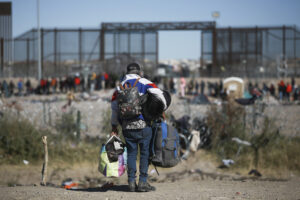
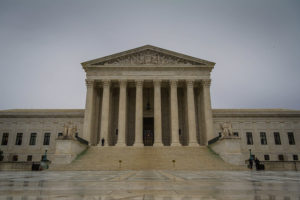
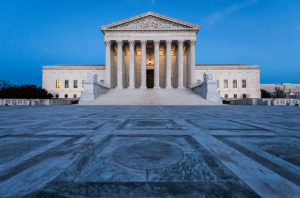
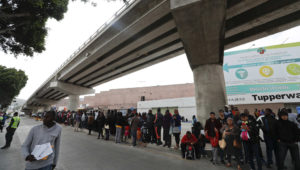

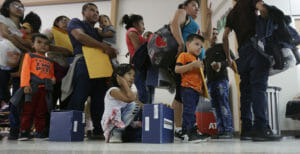


You need to be a supporter to comment.
There are currently no responses to this article.
Be the first to respond.